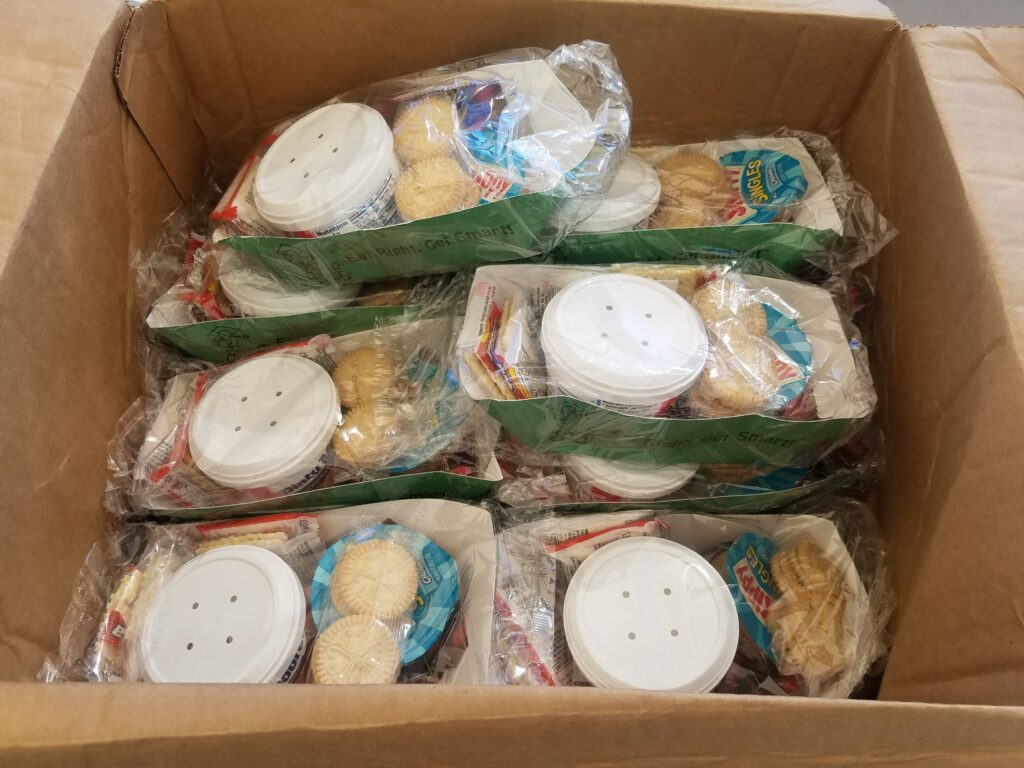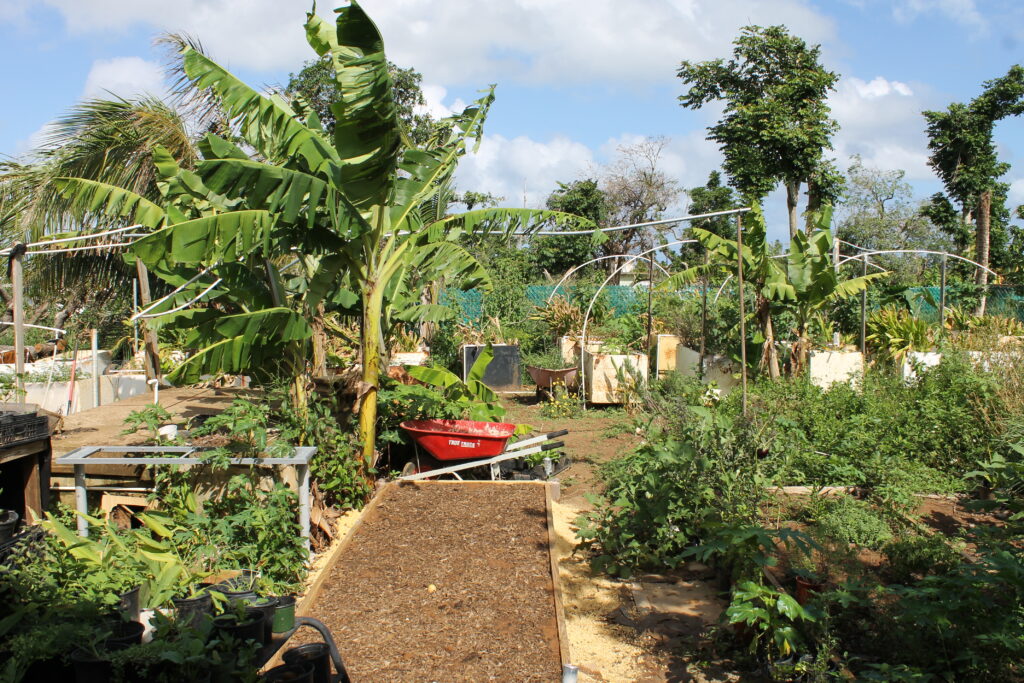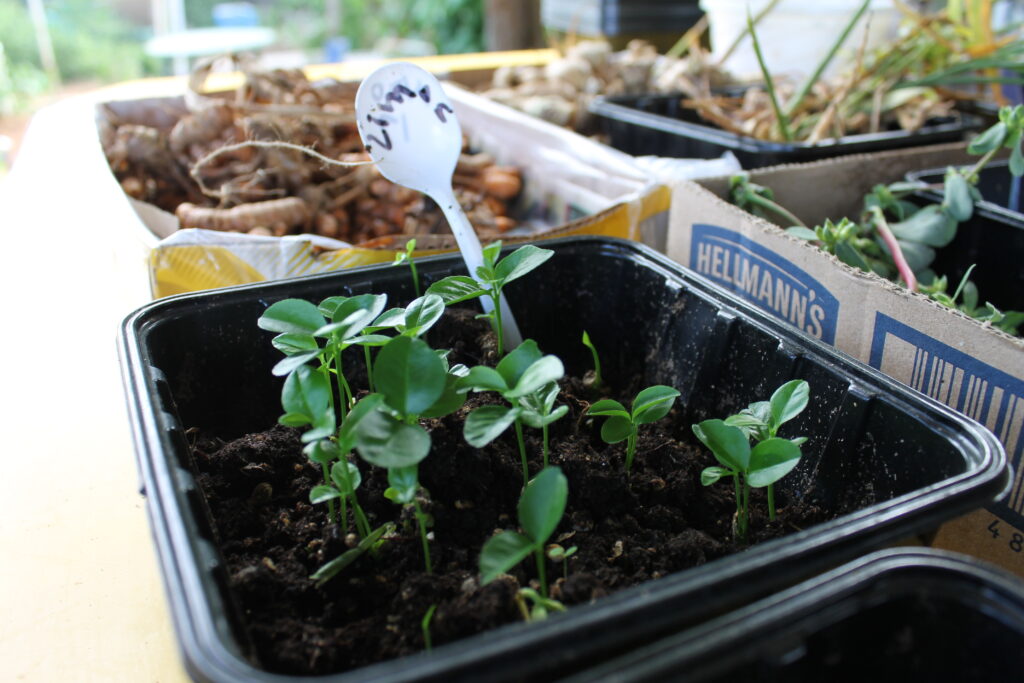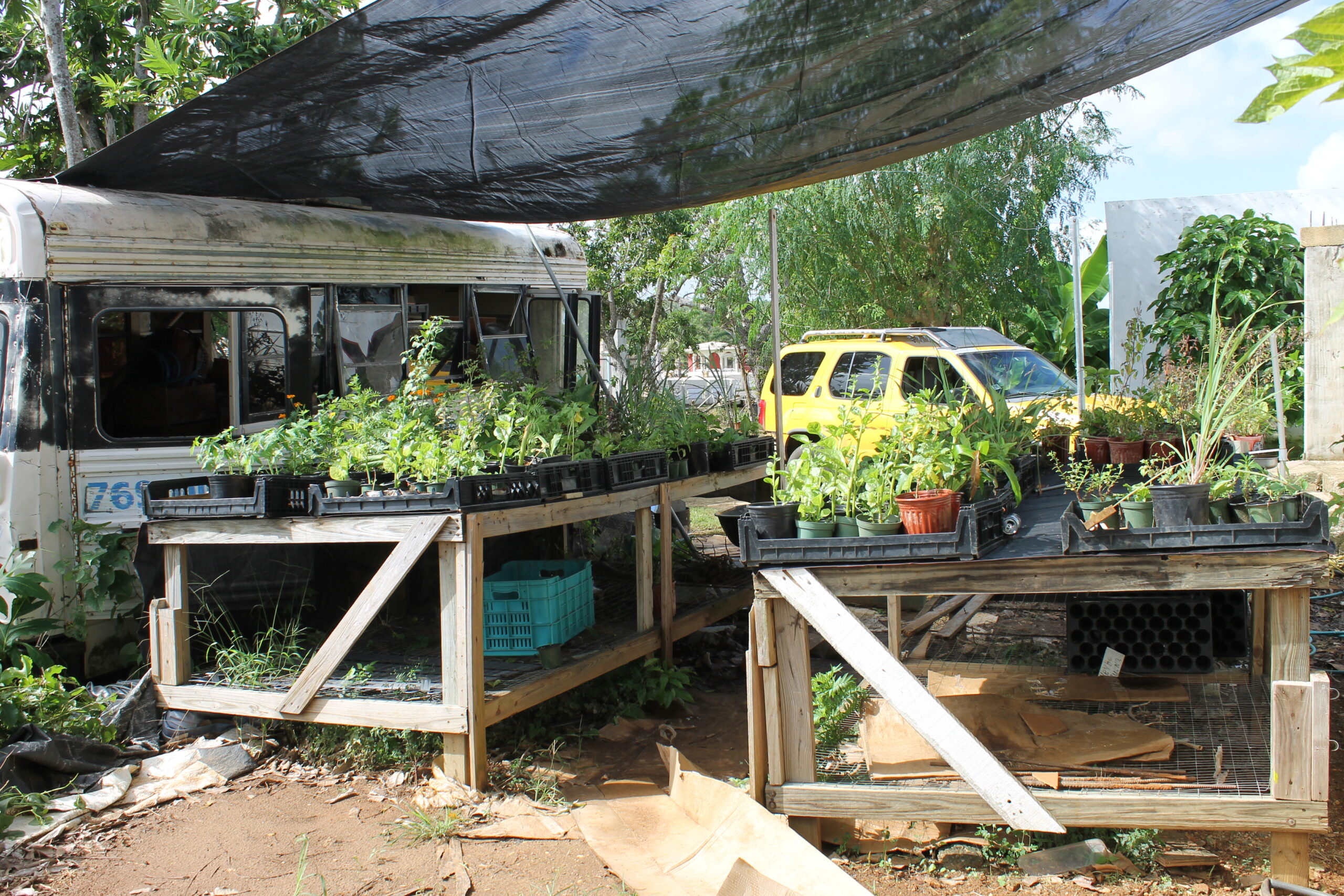Economic modes of extractivism, austerity, and disaster capitalism increasingly intertwine in Puerto Rico, where at present we are witnessing the privatization of the public sphere on a massive scale. The path to austerity for Puerto Rico was already set before Hurricane Maria devastated the region in September 2017, but the storm’s aftermath was worse than anyone could have imagined, with governmental neglect, discrimination, and dereliction of duty pushing the population to their psychic and physical limits. The deepening of Puerto Rico’s socioeconomic crisis has opened the way for extractive and speculative projects of many kinds to take root and flourish.
Hunger on a mass scale should be a strange phenomenon in the Caribbean, where the natural environment does not suffer winters and their scarcity. Hurricanes do create conditions of scarcity in their wake, though there are preventive strategies that can help, such as harvesting early, or relying on root tubers and collecting fruit from fallen trees, especially if you know the storms are coming or what to look for in the aftermath. After Irma and Maria, many Puerto Ricans were isolated, cut off from access to refrigeration and stores, as well as to fresh food and clean water. For months, many struggled to put food on the table. At least two people have died of starvation. It could have been worse, as multiple hurricanes in the Caribbean basin following closely upon one another, and to the north of Puerto Rico, suggest that relief supply chains that flow from north to south could be broken by the repetition of such a scenario in the future or else strained to the point of becoming useless or unreliable.
For most people in Puerto Rico, the state seems like an obstacle to survival. The process of attaining basic social services was difficult before Maria and is now nothing short of Kafkaesque after. The Federal Emergency Management Administration (FEMA) was largely distinguished by its absence in the hardest hit parts of Puerto Rico. Their influence was strongly felt however, in the sea and air ports, where they confiscated shipments containing generators, food, water, and other aid. I saw with my own eyes the boxes full of Cheetos and applesauce distributed by FEMA in Utuado, the Dinty Moore stews and crème sandwich cookies in single serving units distributed by the Army in Vieques, and the families collecting water from springs and streams by the side of the road in the mountains of Adjuntas three months after Maria. So many people even today are still struggling to survive.


Maria hit hard, with the force of something brutally familiar—really intimate. The effect was too intimate, reaching down into existential layers of Puerto Ricanness and my own genealogy. María is my middle name. It was also my mother’s name—María. She told me once how in the 70s she and her friends in the Puerto Rican Socialist Party laughed about that scene in West Side Story when the Italian guy goes looking for the Puerto Rican girl he’s in love with and sings, “Mariiiiaaaaa!,” like she’s all special. Mami said she and her feminist friends used to joke that not one, but all the Puerto Rican girls in the barrio had looked out their tenement windows and answered, “¿Queeeé?”
I am driving with the windows down on a narrow, curving, mountain road one afternoon in December of 2017 in Utuado, Puerto Rico, the town where my maternal grandmother Emérita González was born in 1920, and from which she fled in 1928 after Hurricane San Felipe II destroyed her family’s small farm. Maria was the first comparable hurricane to make landfall in Puerto Rico since then, exactly 90 years later.
I pass a very old man sitting under a blue plastic tarp. The tarp makes a kind of lean-to against the one remaining wall of his destroyed wooden house and the adjacent outhouse that is still standing. He is listening dejectedly to the radio with his feet propped up on a box, sitting in a padded armchair placed on the dirt outside what used to be his home before Hurricane Maria demolished it three months prior.
I wave as I drive slowly by and he waves back, so I decide to stop and speak with him. I ask him if he is okay. His speech is hesitant. I can’t quite make out anything he says. I ask him if he needs anything: some food, a mosquito net, or a solar lamp, perhaps. He shrugs and stares off over my shoulder. I reiterate the offer of food and he accepts, saying, “Well, as long as you don’t charge me.”
I say, “No, of course not!,” as I hand him most of the donated food items in the trunk of the rental car while assuring him there is no charge. He stacks the cans on the roof of a small pick-up truck nearby. When I ask what he will do without a can opener, he says he will use his machete.
I feel the weight of history on my bones as I give him a hug and leave.
After more than a decade working on public health cultures in Puerto Rico with an emphasis on contagious diseases such as AIDS and Zika virus, as well as addiction and sex work, I was looking forward to studying the relatively recent growth and development of organic farming, or agro-ecology, as it is called on the island where I was born and raised.

This farming movement is a hot topic among activists and academics because of the utopian yearning for sustainability and even self-determination that it represents. To hungry leftist eyes, cultures of agro-ecology in Puerto Rico offer the promise of a recalibration of modes of anticolonial resistance away from political orthodoxies and toward forms of organizing or praxis that are implicitly and sometimes explicitly in opposition to US sovereign power and the interests of global capital. I thought of this as my happy project. But then Maria hit.
After Maria, the context is one of seemingly unrestricted privatization of land and other natural resources, population transfer, increasing wealth polarization, economic depression, lack of democracy, and mass emigration. For related reasons, small farmers face many difficulties. They also carry the aspirations of many whose dreams of a different Puerto Rico ride on the farmers’ continued ability to overcome or negotiate these challenges. Prioritizing small-scale farming and working towards food autonomy are fundamental to leftist politics in Puerto Rico today. But the process goes against every notion of progress engrained in generations of Puerto Ricans who learned to think of cement as a manifestation of cleanliness, progress, and modernity. Farming as a political object also inflames historical tensions with regards to the relations between place, race, gender, and identity. Yet, undeniably, the agro-ecology movement has created new hope.

If Puerto Rico has, after Maria, emerged as a highly active extractive zone and territory of the United States, what is it that is being extracted? Certainly land, among other things. Oceanfront or scenic properties are in especially high demand. Real estate in general is primed for a major transformation in ownership structures. Industrial land and experimental sites are also attractive to US and Chinese investors. Abandoned military installations represent valuable real estate and development speculation continues in places like Ceiba, Culebra, and Vieques. Former military bases are mostly wildlife refuge areas now, and although they suffered contamination to varying degrees, much of which has not been cleaned up, they are visually pristine or structurally uncluttered areas, perhaps with some military waste or rubble, but otherwise primed for commercial development.
Some land (and water) is also being claimed for sustenance by people who live in the margins of both industrial and tourist economies. Agriculture, apiculture, fishing, foraging, and poultry farming within these marginalized sectors continue as an everyday practice, although they face growing limitations due to pollution and privatization of natural resources. Many people rely on small-scale agricultural production and backyard farming for their regular sustenance. These ordinary sites of self-reproduction form an other Caribbean.
This other Caribbean emerges out of the alternate cartographies of survival that subtend historical geographies of plantation monoculture and imperial neglect in agriculturally marginal islands. Forms of food production based on the use of rescued lands, public areas, or the liminal spaces between dwellings, for example, are not accounted for in the 10-15% of food that is commonly cited as being produced and consumed in Puerto Rico. This is because these food items never enter the market as commodities. Rather, they circulate within informal or extended kin networks, or form part of gift or salvage economies that are not factored into statistics based on consumption rates and the point of origin of consumer products.
Constructing alternative spaces of knowledge exchange, along with para-state or extralegal forms of socioeconomic life based on solidarity is the only thing that makes living in Puerto Rico possible right now for all but the most privileged. The extractive view cannot fully account for this other Puerto Rico becoming-free at the razor’s edge of neoliberal precarity because the fluid, dynamic, paradoxical, and collective process of building and enacting solidarity amid this chaos is necessarily beyond its epistemic grasp.


